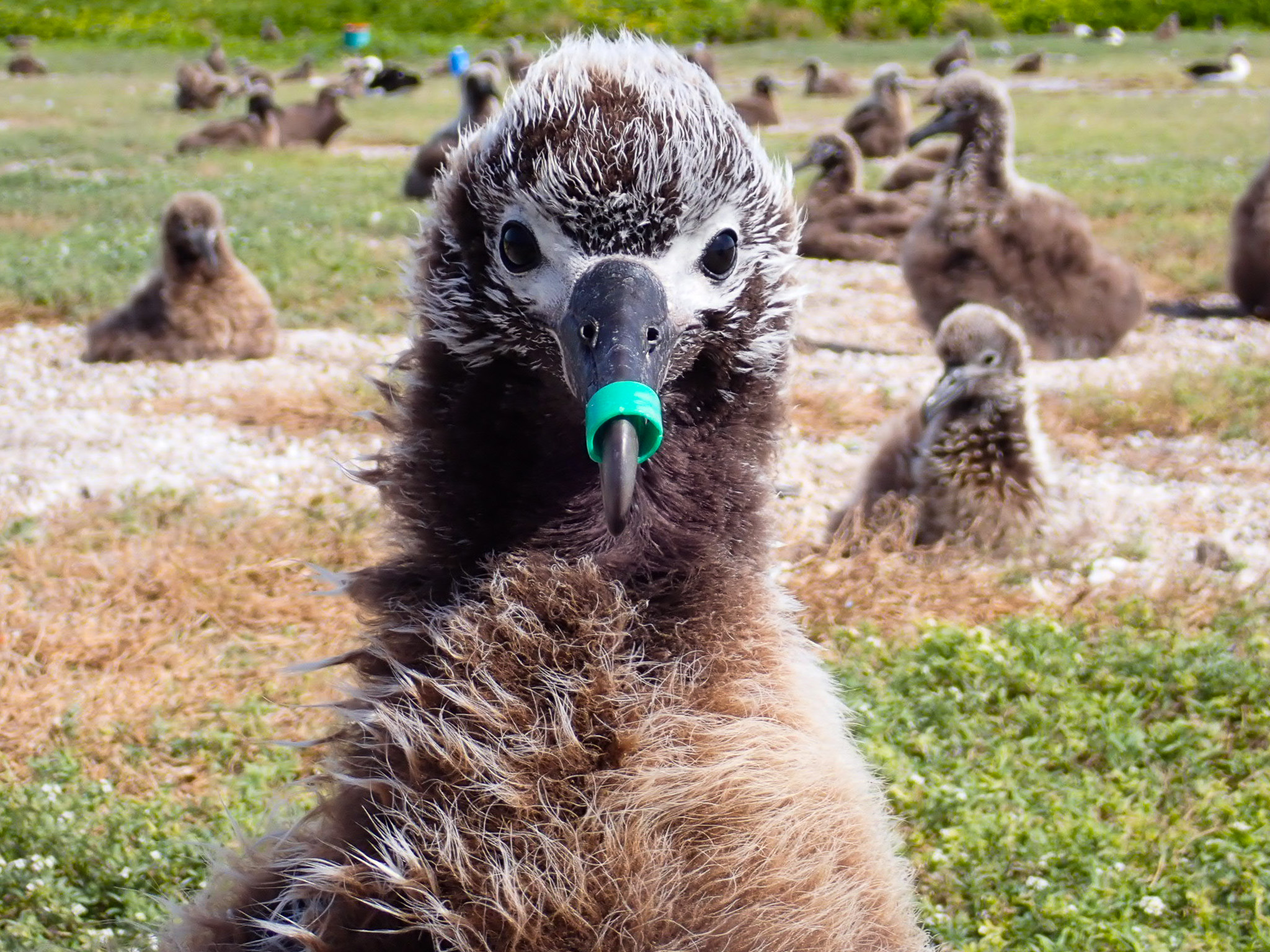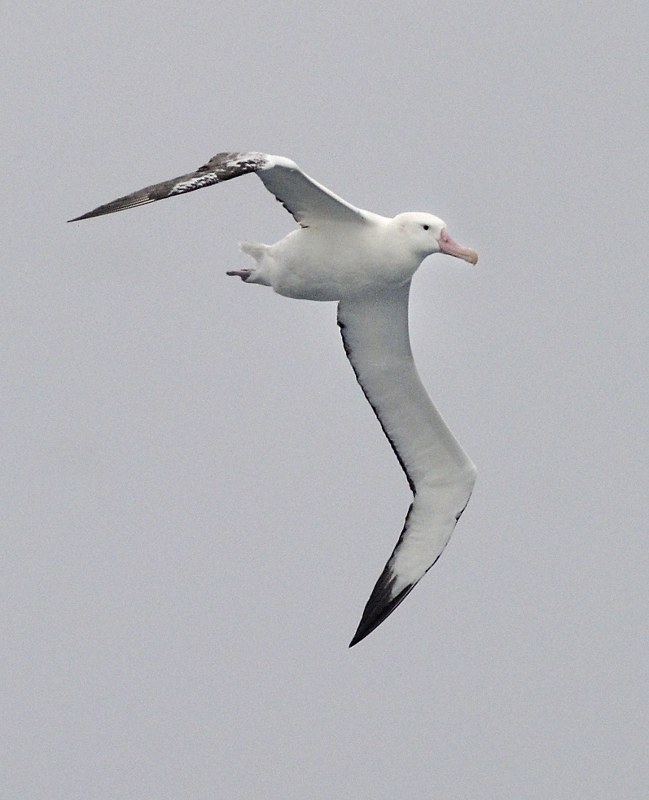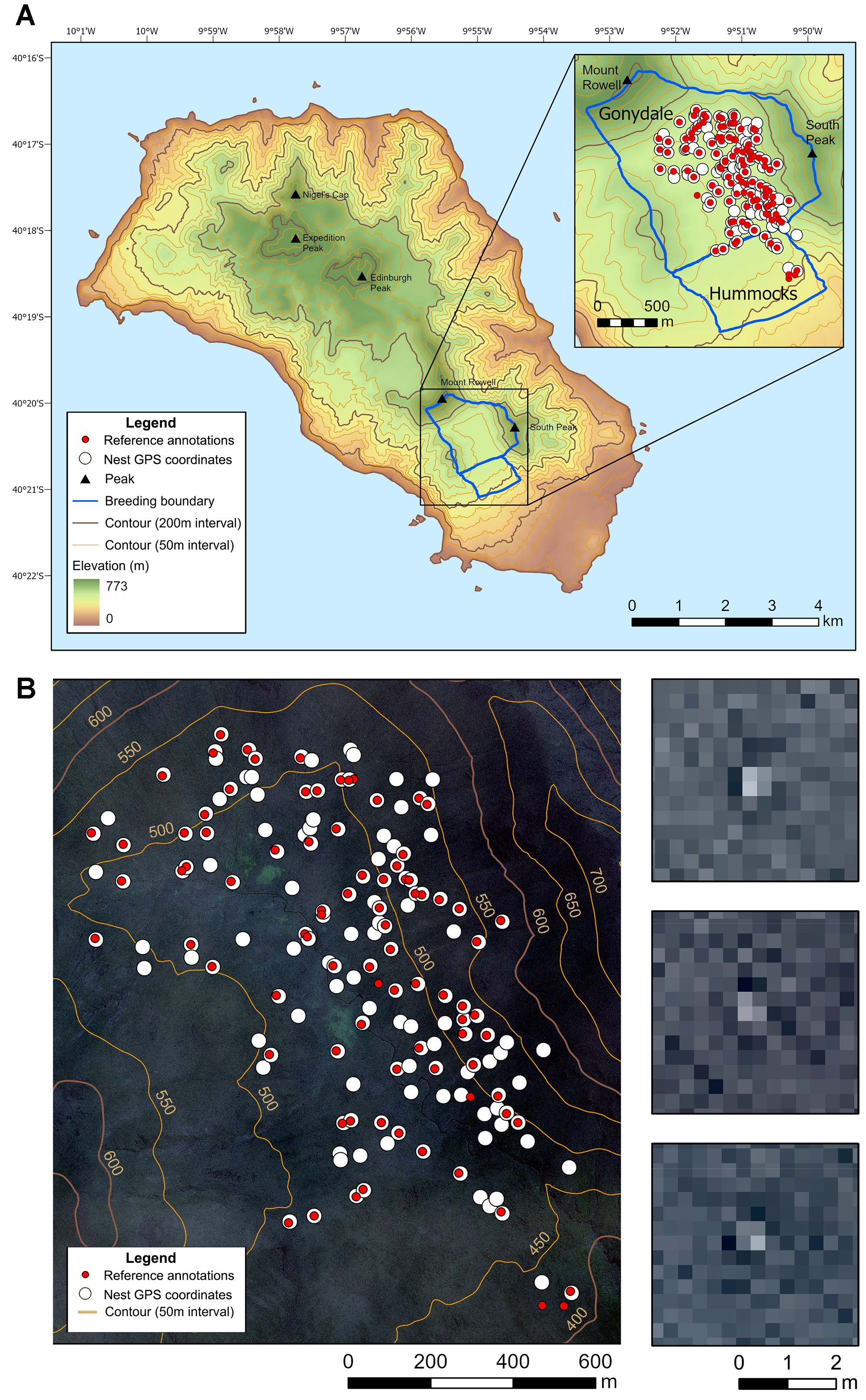
Sooty Albatross on Amsterdam Island, photograph by Dominique Filippi
Yves Cherel and Colette Trouvé (Centre d’Etudes Biologiques de Chizé, Villiers-en-Bois, France) have published in the journal Deep–Sea Research I on the squid diets of Phoebetria albatrosses on two French islands in the southern Indian Ocean.
The paper’s abstract follows:
Using a total of ~7000 accumulated beaks sorted from 92 food samples, the cephalopod diet of sooty albatross Phoebetria fusca was determined for the first time at the subtropical Amsterdam Island (3898 beaks from 53 food samples), and it was compared with prey eaten at the subantarctic Crozet Islands (3085 beaks from 39 samples). At Amsterdam Island, sooty albatross fed on 42 cephalopod taxa that included the dominant Histioteuthis atlantica (34.7% by number of beaks) and juvenile Ommastrephes cylindraceus/Todarodes filippovae (10.1%). They preyed primarily upon cephalopods that have a wide latitudinal distribution (55.1%), with subtropical species ranking second (25.8%), and Southern Ocean endemics third (19.1%). By contrast, birds from Crozet Islands fed primarily on Southern Ocean endemics (80.7%), followed by subtropical species (14.8%), and taxa with a wide distribution (4.5%). There, the main prey were adult Histioteuthis eltaninae (24.6%), Batoteuthis skolops (27.2%) and Galiteuthis glacialis (16.2%). Sympatric sooty and light-mantled sooty P. palpebrata albatrosses from Crozet Islands segregated by feeding on different prey indicating different foraging grounds north and south of the archipelago, respectively. Light-mantled sooty albatross fed almost exclusively on Southern Ocean endemics (98.2%), such as G. glacialis (44.4%), Psychroteuthis glacialis (21.4%), H. eltaninae (13.4%) and Moroteuthopsis longimana (10.2%). Including cephalopod prey of sooty albatross to the previous investigations on teuthofauna from the southern Indian Ocean added southern subtropical species to Southern Ocean taxa. Overall, teuthofauna of this vast oceanic zone hosts at least 71 cephalopod species, including two bathyteuthids, 56 oegopsids, two sepiolids, three cirrate and seven incirrate octopods, and the vampyroteuthid Vampyroteuthis infernalis.\
Reference:
Cherel, Y & Trouvé, C. 2024. .Comparison of cephalopods eaten by sooty albatross Phoebetria fusca breeding in subtropical and subantarctic waters, and teuthofauna of the southern Indian Ocean. Deep–Sea Research I 206 104262.
John Cooper, Emeritus Information Officer, Agreement on the Conservation of Albatrosses and Petrels, 14 April 2025
Personal note: It has been three decades since I published (with the late Norbert Klages) on the squid diet of Phoebetria albatrosses!
Cooper, J. & Klages, N.T.W. 1995. The diets and dietary segregation of sooty albatrosses (Phoebetria spp.) at subantarctic Marion Island. Antarctic Science 7: 15-23.


 English
English  Français
Français  Español
Español 


